
6 minute read
Starry, starry nights
Exploring the night skies in Atlantic Canada
BY SHELLEY CAMERON-MCCARRON
Sandy Pond, Terra Nova National Park
Louis Comeau gazes at the stars every chance he gets. And he’s not alone in Atlantic Canada, where “astrotourism” is rapidly growing in popularity.
Blessed with dark-sky preserves, secluded shorelines, open countryside, university observatories and stargazing accommodation packages, Atlantic Canada inspires one to look to the heavens with awe.
“There’s always something special to look at,” says Comeau, manager of Mount Carleton Provincial Park, a designated dark-sky preserve uniquely situated in the New Brunswick highlands, home to the Maritimes’ highest peak and two major watersheds. With no housing development in the park, and views overlooking water, it's dark as far as the eye can see. “You can imagine the setting, lakes surrounded by mountains, with no light pollution. This is the perfect area for stargazing.”
Seeing millions of stars shining bright gives new perspective on how big the universe is, says Comeau.
Dark and accessible
The novelty of a dark, accessible location to view the night sky is really catching on, says Karen Wolfrey, Visitor Experience Manager at Terra Nova National Park, a designated dark-sky preserve in Newfoundland and Labrador.
For millennia, the stars and planets have captivated. However, today artificial lighting is impacting night sky views. Artificial lighting seems to be creeping into our lives
Lighthouse at Louisbourg no matter where we go; both in the form of screens and in high intensity LED streetlights and exterior lighting, she says. Modern technology is allowing a new generation of astronomers to see the dark sky like never before, but there’s no substitute to match the awe of experiencing the real thing. A stargazing experience like at Terra Nova may be the first time those living in areas with high light pollution have truly seen the night sky. For those from less populated areas, these places remind of the role of protected areas and why we safeguard them.
Working with the Royal Astronomical Society of Canada (RASC) St. John’s Centre, Terra Nova has developed innovative dark-sky related programs—and it has an outdoor theatre with a large screen and elevated seating for 450 people, perfect for astronomical programs. The park offers wonderful stargazing with its dark skies, plus it has unimpeded views at several vehicle accessible locations, like Sandy Pond, Ochre Hill, Blue Hill and the Visitor Centre.
In New Brunswick, both national parks, Kouchibouguac and Fundy, are dark-sky preserves. Irving Nature Park on the edge of Saint John, is the first Urban Star Park in Canada.
Stargazing connects us all
At Fundy, Parks Canada’s Julie Ouellette says as light pollution from large centres continues to spread and hide the full night sky from view, dark-sky preserves provide an unforgettable experience. The simplicity of stargazing connects us all. No matter where you are on the planet when you look up you will see stars and imagine what could lie beyond.
Designated a dark-sky preserve in 2012 by the RASC, this means the park is one of the best places to explore the night sky in Canada. Top stargazing areas include the Caribou Plain Trail, a 2.1-km loop that provides a sensory dark sky experience; Bennett Lake and Herring Cove day-use areas; and Chignecto Recreation Area.
In Prince Edward Island, the national park provides an idyllic setting for looking skyward, specifically at Greenwich and Cavendish beaches. There’s no light pollution so the stars are brightest, and views are over water.
Whole new sky
“It’s a whole new sky to see,” says Adam Hill, a photographer, avid dark sky viewer, and marketing officer with Destination Cape Breton.
“We’re so used to seeing blue skies and clouds. When you go outside in a truly dark sky, you’re almost taken aback and speechless. You feel pretty small. You realize your place in the universe,” says Hill who cites Cape Breton’s south coast, towards Louisbourg, as an exceptional place to stargaze with its inky-dark skies and ocean vantage points. “I’ve been all over Canada, and it’s the best I’ve seen.”
Visitors can even see the night sky 18th-century style by camping overnight at Fortress Louisbourg National Historic Site, and across the island, Hill recommends
Kouchibouguac National Park
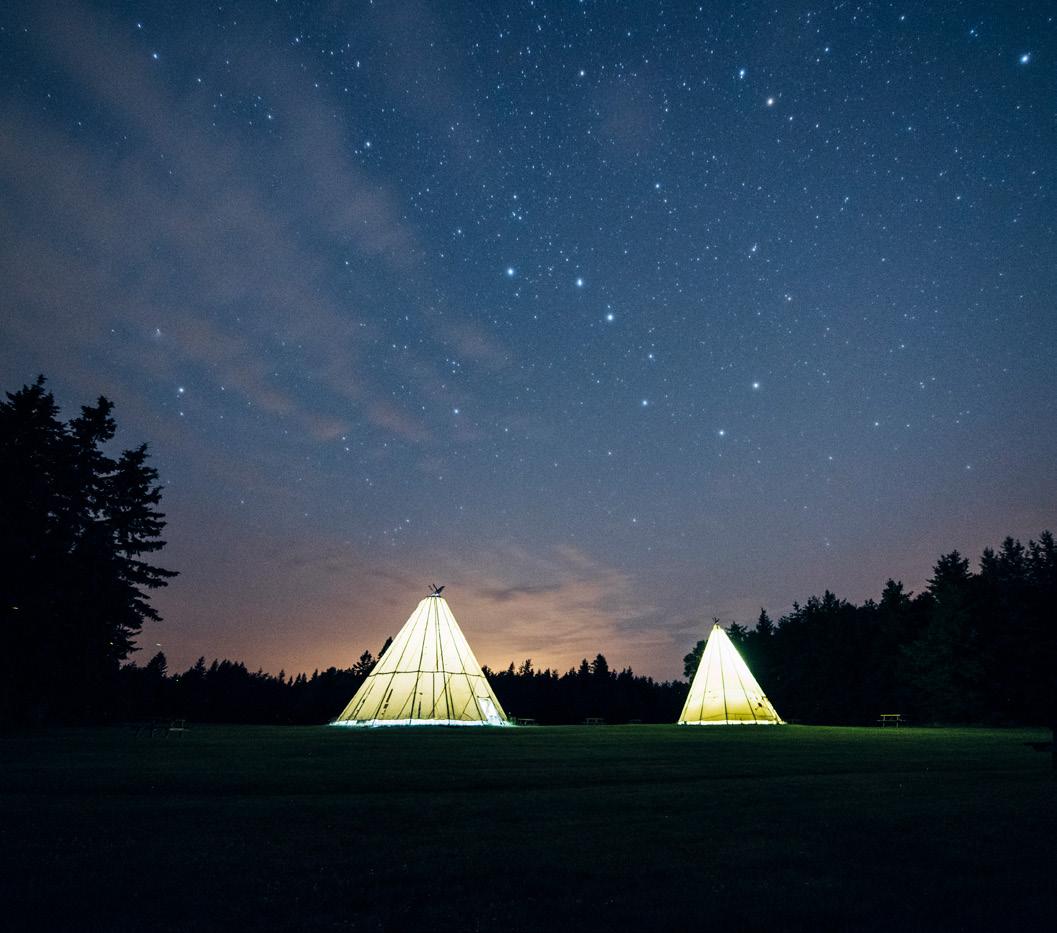
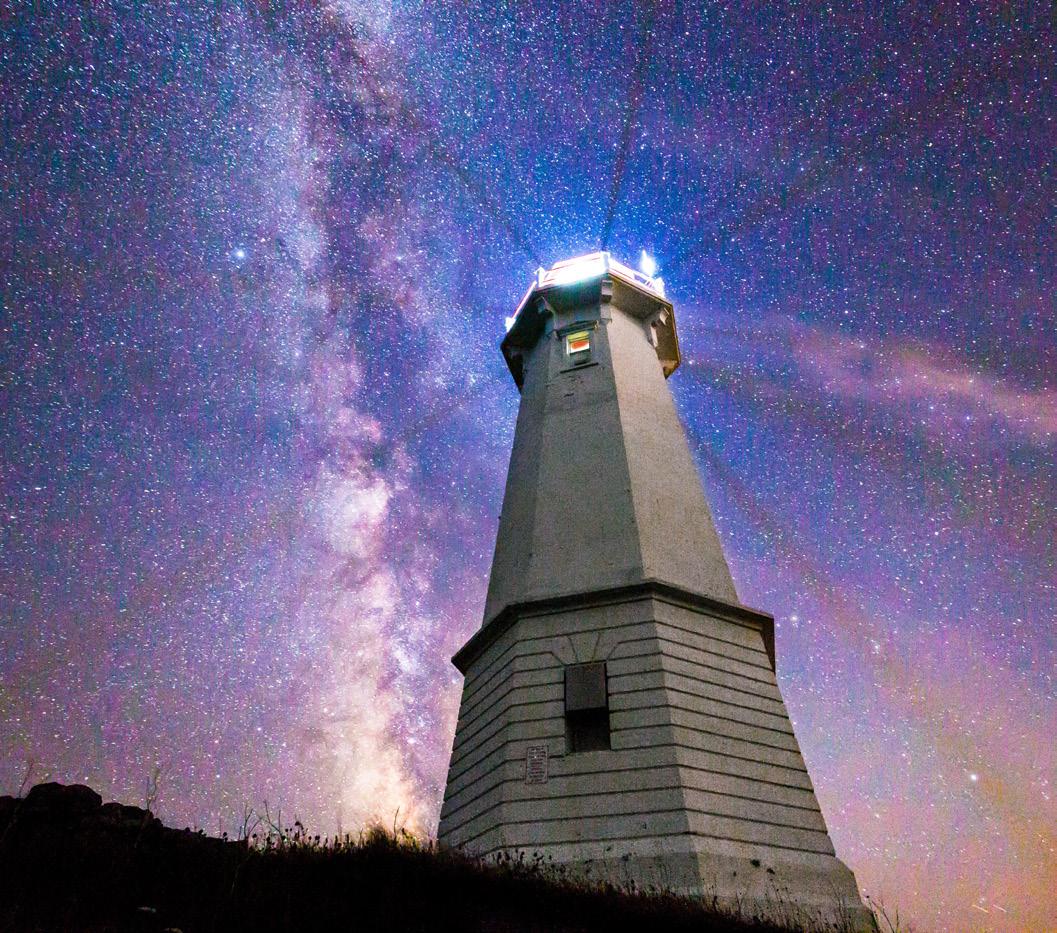
NEW BRUNSWICK TOURISM
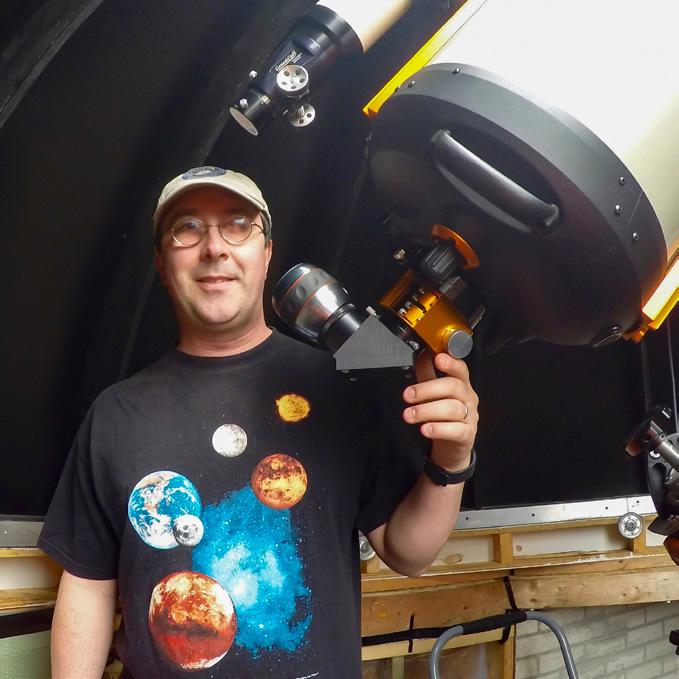
North Mountain in Cape Breton Highlands with no lights, sparse traffic, and lookoffs like the North Bay lookoff overlooking the Aspy Fault Line.
Kejimkujik National Park and National Historic Site is home to Nova Scotia’s only dark-sky preserve. In the southwest Nova UNESCO Biosphere, the area has the darkest skies in the province. Add in learning about Mi’kmaw cultural traditions, and it is ideal landscape to discover how stars have long inspired story, song, and legend. Guided programs (due to COVID-19, visitors should confirm available activities) are offered at the sky circle in summer and visitors can join guided night hikes, night paddles and even night bike rides, or rent a Dark Sky Kit for a self-guided experience. Kejimkujik also hosts an annual Dark Sky Weekend, that brings in partners from RASC’s local chapter.
Malcolm Seaboyer, marketing coordinator with Yarmouth & Acadian Shores Tourism Association, says the region, designated the first starlight reserve and starlight tourist destination by The International Starlight Foundation in 2014, offers incredible viewing. “For a guided tour of the dark skies, you don’t want to miss the Deep Sky Eye Observatory or Trout Point Lodge. You can even stay overnight at both T im Doucette locations. If you’d like to view on your own with telescopes, a binocular or the naked eye, there is no shortage of places to go,” he also says, mentioning Wedgeport Nature Trail, Cape Forchu Lighthouse, Ellenwood Provincial Park, Argyler Lodge as well as local beaches for spectacular views of stars and moon shimmering over water.
At Deep Sky Eye, where visitors can overnight in a cozy, clear dome Sky Bubble tent in summer and participate in programs year-round including the Nocturnal Sky Theatre outdoor program, Tim Doucette says stargazing appeals for many reasons. “A general curiosity, wonder, and it helps people reconnect with the universe, even though they might not think they need it. Having an understanding of how special we are as a species and our place in the heavens sometimes makes people appreciate our little blue dot a bit more.”
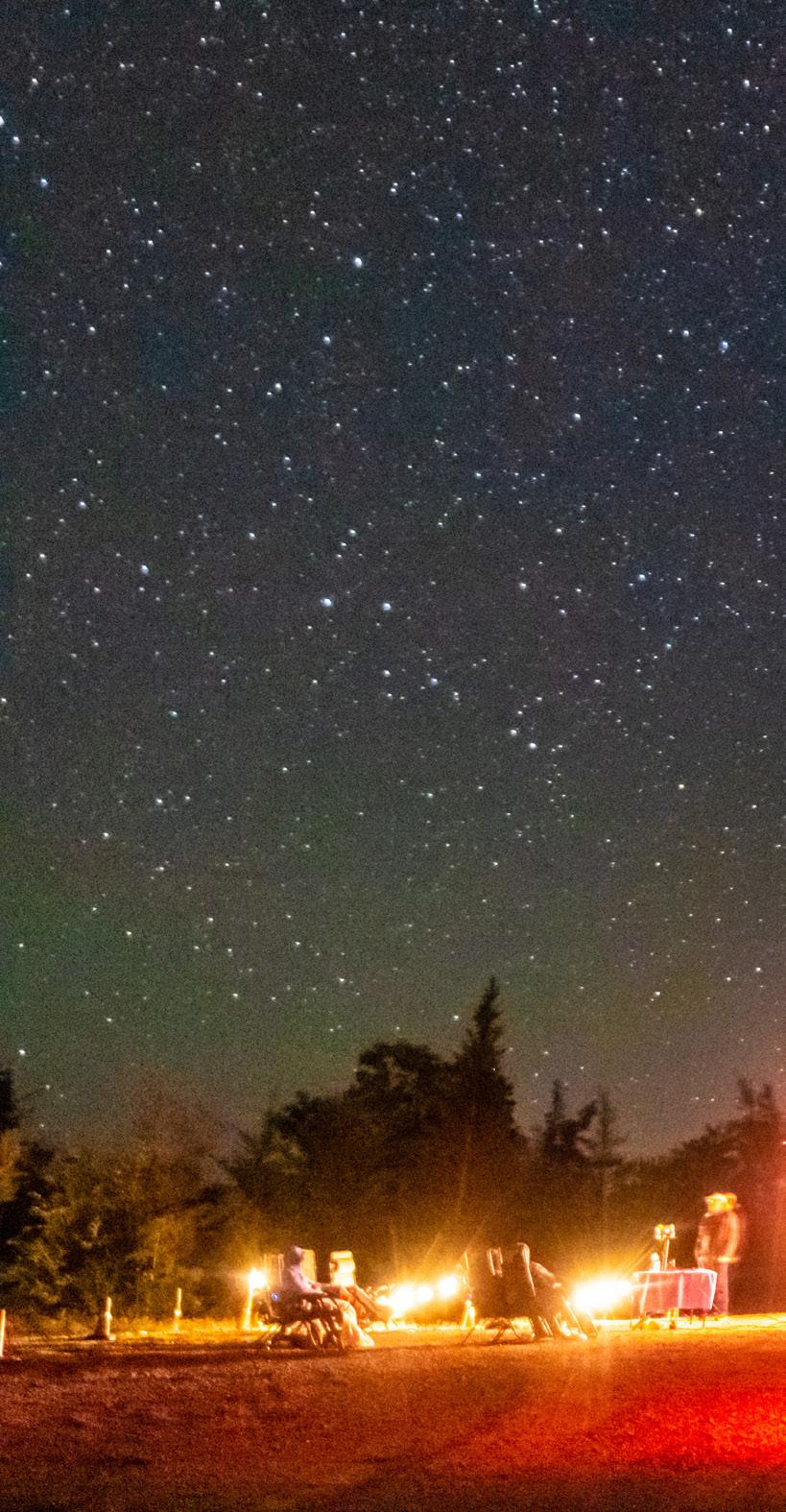
DEEP SKY EYE OBSERVATORY



DEEP SKY EYE OBSERVATORY
Nocturnal Sky Theatre, Deep Sky Eye Observatory • Be prepared. Evenings can be cool. Dress warmly and bring a blanket to lay back and enjoy the show. • Clear skies are essential. Pick a night when there’s little or no clouds in the forecast and little to no moon. • Pick a site away from exterior light sources. Let your eyes adjust to the darkness. If camping, close all lights and don’t start a fire. • Try stargazing in winter or fall. The night sky tends to be clearer in winter than summer. Also, since darkness falls earlier, there’s no need to stay up past your bedtime. • Familiarize yourself with the viewing location in the daytime to get a sense of the layout. • Set up any equipment before dark. • Red headlamps are best for finding your way around dark locations, they have less effect on your ability to see at night. • Download an astronomy app to assist in orientation of the sky.
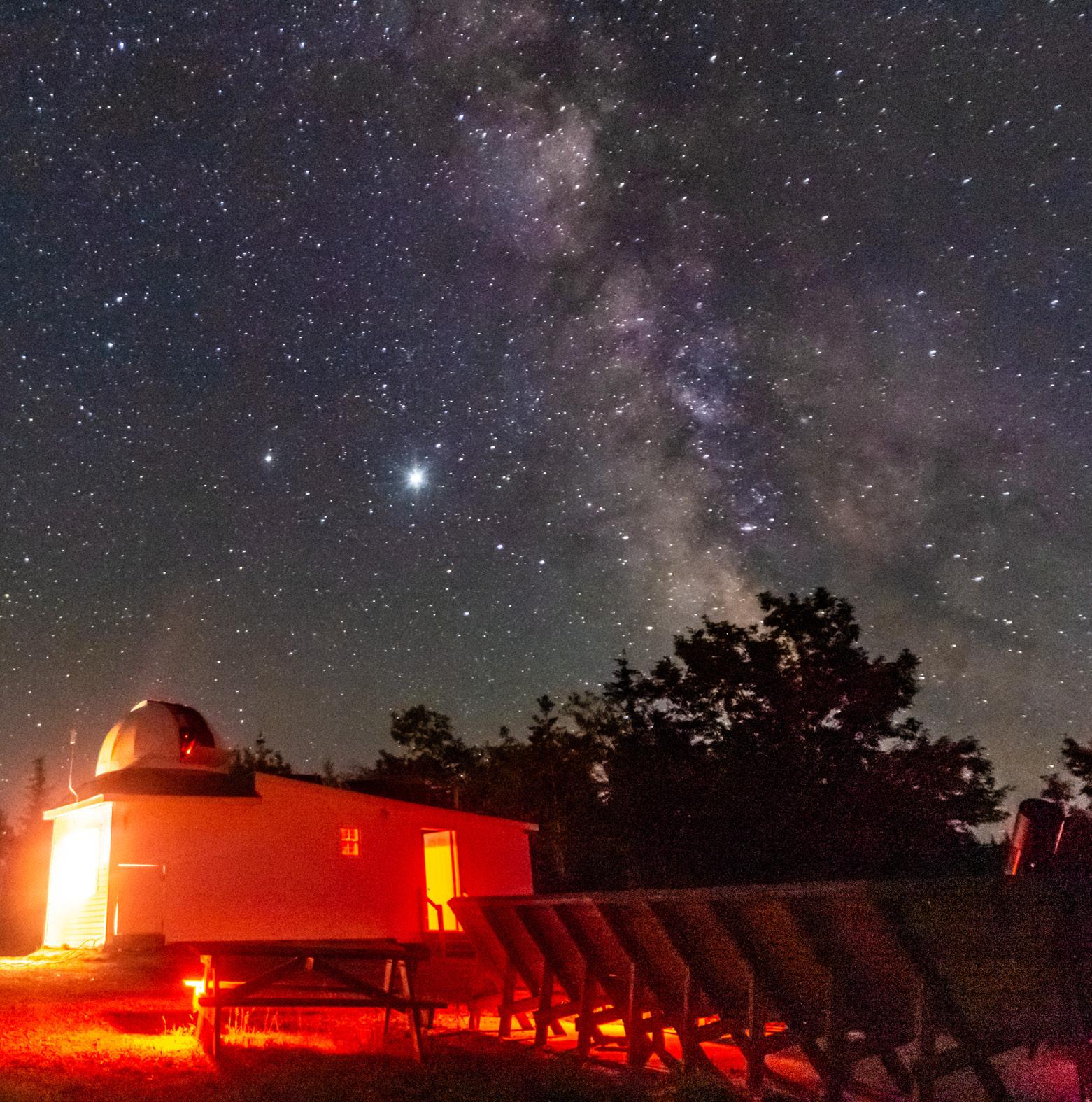
Tidal Bay
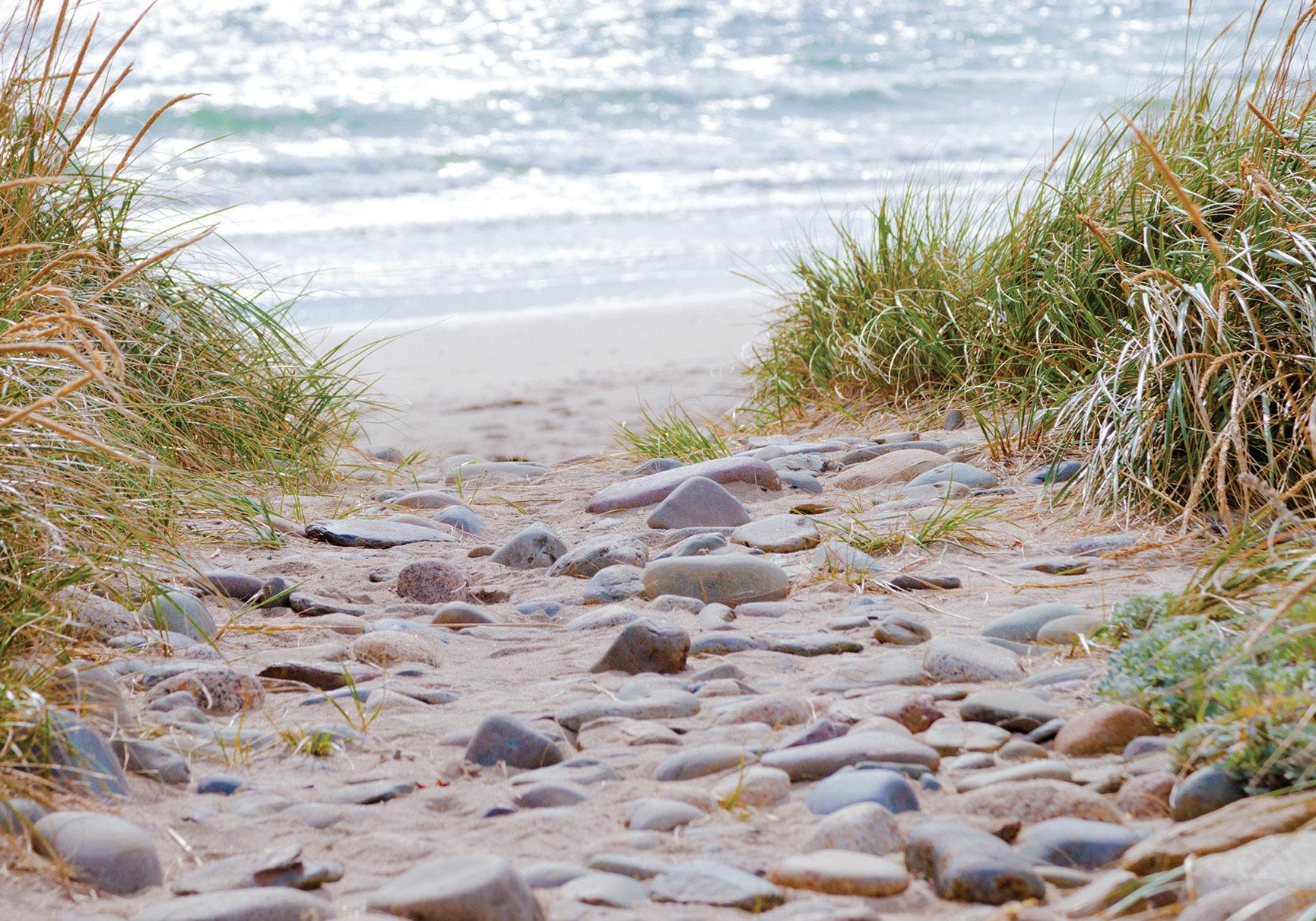
The perfect complement to Nova Scotia seafood or to share with friends.
GRANDPREWINES.COM











